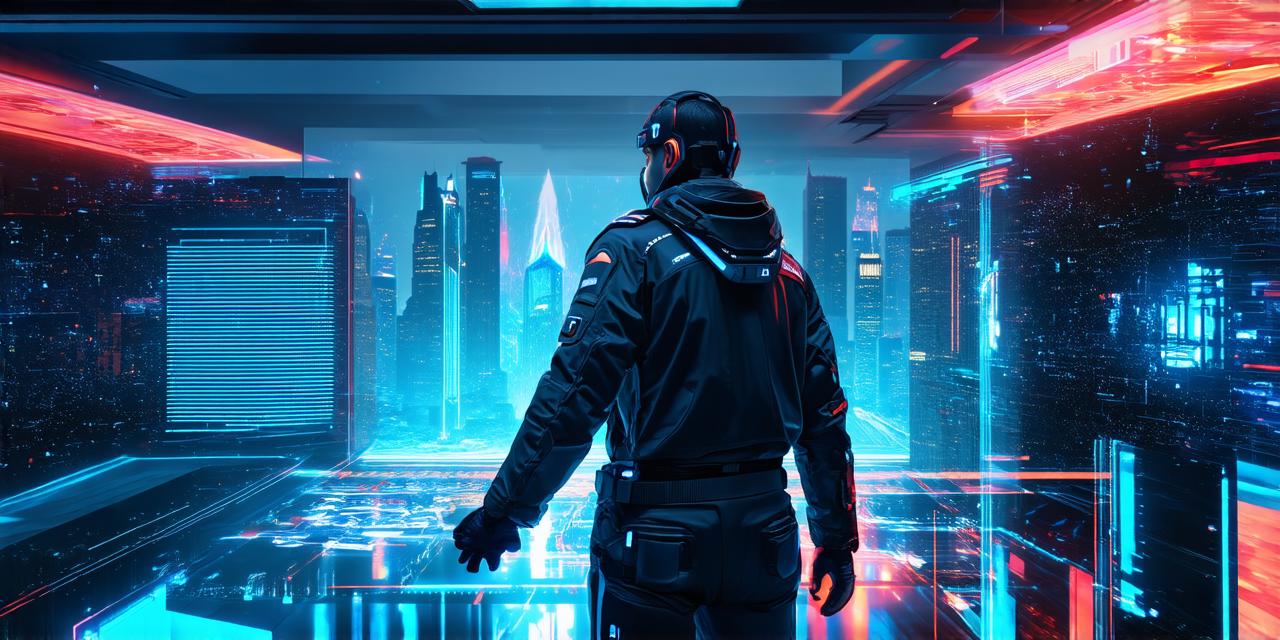Augmented reality (AR) is an emerging technology that blends digital content with the real world. This technology has the potential to revolutionize how we experience the world by providing a more immersive and interactive environment for users.
What is Augmented Reality?
AR is a technology that overlays digital content onto the real world. This content can include images, videos, animations, and even 3D models. AR allows users to interact with this content in real-time and in real space, creating a more immersive experience than traditional media.
The Evolution of Augmented Reality
AR has been around for over a decade, but it wasn’t until the launch of Apple’s ARKit and Google’s ARCore that it became accessible to a wider audience. These platforms have since enabled developers to create more advanced AR experiences, which are now being used in various industries.
The Future of Augmented Reality
As AR technology continues to evolve, its potential impact on various industries is only going to increase. Here are some examples of how AR is being used today:
Healthcare

AR has the potential to revolutionize healthcare by providing doctors and patients with a more immersive and interactive experience. For instance, surgeons can use AR to plan and practice complex procedures before performing them on patients. This technology can also be used to provide patients with a better understanding of their condition and treatment options.
Education
AR is being used in education to create more engaging and interactive learning experiences. For example, students can use AR apps to explore historical landmarks or learn about science concepts by interacting with virtual models. AR also allows for remote collaboration between students and teachers, regardless of their location.
Retail
AR is changing the way we shop by providing a more immersive and interactive shopping experience. For instance, IKEA has an AR app that allows users to see how furniture would look like in their home before buying it. Similarly, Sephora has an AR app that lets customers virtually apply makeup on themselves and see how it looks like in real-time.
Manufacturing
AR is being used in manufacturing to improve efficiency and reduce costs. For instance, workers can use AR to visualize complex assembly processes or troubleshoot equipment issues in real-time. This technology also allows for remote collaboration between workers and engineers, regardless of their location.
Transportation
AR is being used in transportation to improve safety and reduce congestion. For example, AR can be used to display information about traffic conditions or provide turn-by-turn directions to drivers. It can also be used to enhance the experience of train passengers by providing real-time updates on their journey.
FAQs
What is augmented reality?
Augmented reality (AR) is a technology that overlays digital content onto the real world. This content can include images, videos, animations, and even 3D models. AR allows users to interact with this content in real-time and in real space, creating a more immersive experience than traditional media.
What are some examples of augmented reality?
AR is being used in various industries, including healthcare, education, retail, manufacturing, transportation, and entertainment. For example, AR can be used to provide doctors with a better understanding of patient anatomy, help students learn about science concepts, enhance the shopping experience, improve efficiency in manufacturing, and provide real-time updates on train journeys.
What are the potential benefits of augmented reality?
AR has the potential to revolutionize how we experience the world. It provides a more immersive and interactive environment for users, which can improve efficiency, reduce costs, and enhance safety in various industries. AR can also provide a better understanding of complex concepts and procedures, making it a valuable tool in education and healthcare.
What are some challenges associated with augmented reality?
Some challenges associated with AR include the need for high-quality cameras and processing power, privacy concerns, and the potential for addiction and disorientation. Additionally, there may be resistance to change from traditional industries that have not yet adopted AR technology.
Conclusion
Augmented reality is an emerging technology that has the potential to revolutionize how we experience the world. It provides a more immersive and interactive environment for users, which can improve efficiency, reduce costs, and enhance safety in various industries. As AR technology continues to evolve, its potential impact on the world is only going to increase.
